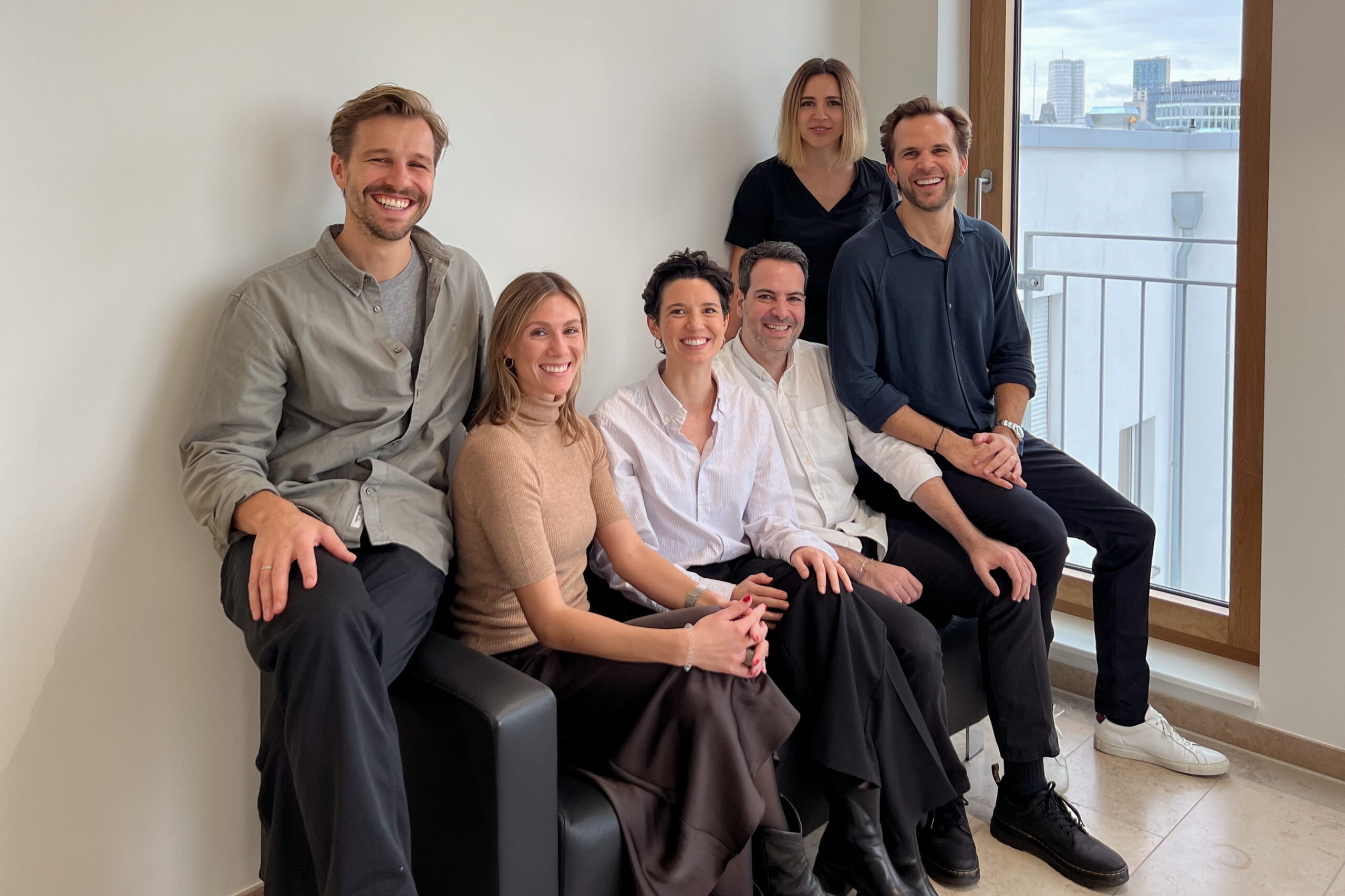Attracting and retaining talent is fundamental to HR, directly impacting your business’s success.
From improving company culture, taking care of team well-being tomore technical or administrative duties like compliance and payroll, every HR task centers on securing the best talent and ensuring they stay.
Understanding the Importance of Attracting and Retaining Talent
Unsurprisingly then, attracting and retaining talent is an all-important talent with many separate elements that you need to consider. To make things easier, welcome to our ultimate guide! We’ll answer all your most pressing questions and point you in the direction of more information and actionable strategies wherever possible. Let’s get started!

Strategies for Attracting and Retaining Talent
This is a massive question with many answers! However, here are an important few areas you can think about when you want to attract and retain talent.
Offer a competitive package
Of course, salary is one of the most important elements that dictates how happy candidates will be to accept a job offer and then stay in that role.
As a HR leader, this might be frustrating, as you don’t have a huge amount of control over the salary offered. But where you do have more control is in the benefits you can provide and advocate for.
Benefits have a huge impact on talent attraction and retention. For example, mental health support shows the following affects:
- Companies with a mental health benefit have 60% less turnover
- Mental health support is rated by employees as the most important benefit to offer
- Employee mental health support makes a company more attractive to 85% of jobseekers
For more on benefits, read:
- 7 Benefits Which Actually Improve Employee Satisfaction
- How to Attract the Best Talent With Mental Health Support
- How to Convince Your Management of a Mental Health Benefit
Foster a strong Company culture (and a strong company brand)
A lot of guides to attracting the best candidates talk about the importance of a company brand — after all, people want to work for well-known, inspiring companies, which is why Google has such a high recruitment rate. But we’d argue that company culture comes before brand.
A strong, healthy company culture is what makes brand possible; it’s what ensures that brand isn’t just a shiny band-aid over a toxic culture.
So if you don’t have the company brand of Google or one of the other heavyweights, don’t panic. You can still attract and retain plenty of talent by prioritizing company culture and building a productive, positive environment where people want to work.
For more on company culture, read:
- 5 Steps to a Better Company Culture You Can Take Right Now
- 7 HR Strategies to Improve Company Culture
Provide flexible work arrangements
The COVID-19 pandemic proved what many of us already knew: the traditional office is over. Now, people value flexibility and hybridity in their working environments, and if you provide them in your company you’ll be rewarded with higher talent attraction and retention.
Consider options like remote or hybrid work, flexible schedules and more. And keep in mind that you’ll still need to pay attention to remote employees’ well-being and company culture experience.
Create career development opportunities
Good employees grow in their jobs – that’s natural, and something that you should value, encourage and celebrate. But you need to make sure that no one outgrows your company.
For potential hires, show clear career pathways so they can see how they can grow and advance within your company.
Once your employees start work, offer training and development so they’re supported in their journey to grow.
And be on the lookout to find new roles and promote from within so employees don’t leave your company like a pair of too-small shoes!
How do I attract and retain diverse talent?
Valuing diversity is key. Diverse companies show better business results, higher problem solving skills, and a greater ability to empathize and connect with different client bases.
And of course, we live on a diverse planet and should value everyone on it! So it’s important not to hire homogeneously, but rather to actively seek to include people of different cultures, religions, genders, sexualities, abilities, ages, and more. You can do this by:
- Fostering an inclusive culture with policies that promote inclusion, such as flexible working arrangements, parental leave, and anti-discrimination policies.
- Offering cultural competence training to all employees to build cultural competence and promote an inclusive workplace.
- Supporting and empowering employee resource groups (ERGs) to foster community and advocacy within the company.
- Valuing diversity at all levels, ensuring diverse candidates and employees are also put up for senior leadership and management roles.
- Ensuring equitable compensation with regular pay audits and transparent pay practices.
- Creating a safe space for feedback with regular surveys and anonymous feedback channels — and make sure you actually act on your employee feedback.
How do employee benefits and compensation packages impact talent attraction?
As we’ve answered above, they make a significant difference! No matter how much someone loves the work they do, salary and benefits are very important parts of the job.
And make sure you don’t only think about them during the hiring stage; regular raises are one of the best ways to make employees feel valued and show them that you see a future for them at your company.
And not to toot our own horn, but…
“At Forto, nilo.health is our team’s most loved benefit and a strong driver in recruitment,” says Michael Wax, CEO and Founder of Forto.
Which employee benefits make a difference for both attracting and retaining talent?
Some employee benefits are super fun — like a gym membership. Some employee benefits make the office environment nicer — like snacks and coffee in the kitchen. But some employee benefits make a major difference both on bringing talented new hires into your organization, and making sure that your employees want to stay.
They are:
- Health benefits: Whether that’s providing health insurance in countries like the US where it’s not automatically allotted to every citizen or providing additional health care, like a mental health support benefit or coverage for non-covered treatments, health benefits offer huge appeal for every employee. And because they make it less likely that your employees will be sick or have to leave for reasons of illness or burnout, they also lead to better business outcomes.
- Paid time off: Offering a range of flexible opportunities for your employees to rest and recharge without having to sacrifice their pay check is, unsurprisingly, a big draw. You could also consider options like sabbaticals, paid family leave, or half-pay holidays.
- Career advancement opportunities: As we’ve learned above, offering spaces for employees to grow and develop in their workspaces is crucial to both attracting ambitious new hires and keeping your talented people as they begin to rise. Consider options like mentorship, tuition reimbursement, continuous learning and more.
What are the latest trends in talent acquisition?
Recruitment is an old game. But the way we play the game is always changing! Here are a few of the top trends in talent acquisition:
- Embracing AI: AI is everywhere, so it’s not a surprise to also find it in HR spaces. AI has the potential to help HR leaders in a myriad of ways, by speeding up processes, writing job descriptions, and assessing candidates pre-interview. You could also look for AI in some of the other benefits and employee experiences you offer, including your mental health support.
- Early career hiring: With economic difficulties across the board, many companies are looking for a cheaper labor force — which might mean hiring graduates straight from university or even high school. Key here is to invest in employee development and a strong management team, so that your young starters can succeed and grow in their role. For more information, read our article about what mental health support can tell us about Gen Z in the workplace.
- An emphasis on empathetic and ethical leadership: The last few years have seen swings and roundabouts in terms of the kind of leaders we expect. The COVID-19 pandemic saw a rapidly reduced workforce working from home, then an unexpected economic boost, followed by rumors of a recession. Across this, leaders have helped workers with their health concerns, eased pathways back into the office, and had to steer the ship through tough economic times. Even in the hiring process, one of the best ways to attract the best talent is to prove that your leadership is calm and kind. Empathetic leadership leads to higher innovation and more retention, especially with diverse teams: 57% of white women and 62% of women of color said they were unlikely to think of leaving their companies when they felt respected and valued by their companies.
How does the candidate experience influence talent attraction?
Another place where you can showcase empathetic leadership is in the candidate experience. This isn’t just a moral thing to do; you’ll attract better candidates, and improve your chances of hiring them, if you work to make the process transparent, smooth and accessible for every candidate.
A well-managed candidate experience reduces the likelihood of candidates dropping out of the recruitment process due to frustration or dissatisfaction. And even if a candidate is not selected for a current role, a positive experience encourages them to apply for future openings.
Make sure you consider elements like:
- Communication: Timely, clear, and transparent communication throughout the hiring process keeps candidates engaged and reduces anxiety or frustration.
- Personalization: Personalizing interactions (e.g., tailored emails, considerate interview scheduling) makes candidates feel valued and respected.
- Clear job descriptions: Include details about job responsibilities, pay scale, qualifications, and the hiring process.
- Respectful and professional interviews: Ensure interviewers are well-prepared and respectful of candidates’ time. Use a structured interview process to provide consistency and fairness.
- Timely feedback: Provide timely and constructive feedback after interviews, regardless of the outcome.
How does company culture affect attracting and retaining talent?
As we’ve already seen, company culture has a huge impact on attracting and retaining talent. Still unconvinced? Here are a few facts to change your mind:
- There is a 48.4% chance of job turnover where company culture is poor
- 56% of employees say company culture is more important than salary
- Organizations with a strong learning culture have 30%-50% higher engagement and retention rates
Want to know more?
nilo’s guide to improving your company culture.
What are the key factors that lead to high employee turnover?
Employee turnover is costly and disruptive for any company, and when it increases to high rates it can be a disaster, as you lose institutional knowledge and have to go through the expensive process of replacing important talent.
So it’s important to recognize and be alert to the factors that cause high employee turnover before they build to a crisis.
- Work-Life Balance Issues: Chronic overwork and lack of work-life balance can lead to burnout.
- Toxic Company Culture: Negative behaviors, such as bullying, harassment, and office politics, can create a hostile work environment. A non-inclusive culture where diversity is not valued can make employees feel alienated.
- Poor Management and Leadership: A lack of clear direction, support, and communication from managers can lead to dissatisfaction, while overly controlling management styles can demotivate employees and stifle creativity. Similarly, failing to recognize and reward employees’ contributions can make them feel undervalued.
- Limited Career Growth Opportunities: Employees who see no clear path for career progression may become frustrated and leave. A lack of professional development and training opportunities can make employees feel stagnant.
Want to put a stop to high employee turnover? Try these guides:
- 8 Ways to Reduce Employee Churn
- How to Increase Employee Retention With Mental Health Support
- Mental Health Benefits for Employee Retention
How can companies use exit interviews to improve attracting and retaining talent?
Feedback at any point in time can be super useful for companies. Whether it’s a long term employee who’s leaving after years of experience in the company or someone who’s only been there for a short time, there are things you can learn.
Similarly, a brief survey after you’ve hired someone — or chosen not to hire them! — can shed light on your candidate experience and how you could improve.
Make sure to conduct these interviews systematically. By analyzing this information, you can identify patterns and underlying issues that contribute to employee turnover and make informed decisions to improve both talent attraction and retention.
To properly conduct exit interviews, make sure you:
- Analyze Data: Collect and analyze data from exit interviews to identify common reasons for departure. Look for recurring themes related to management, work environment, compensation, career growth, and work-life balance.
- Track Metrics: Monitor turnover rates and track exit interview data over time to see if specific issues are more prevalent in certain departments, roles, or demographic groups.
- Conduct Training Programs: Develop targeted training programs for managers to address the issues highlighted by departing employees, such as communication, recognition, and support.
- Provide Feedback for Leadership: Use feedback from exit interviews to assess the effectiveness of managers and identify areas where leadership skills may need development.
Want to learn more about attracting and retaining talent with nilo.health? Let’s talk!







